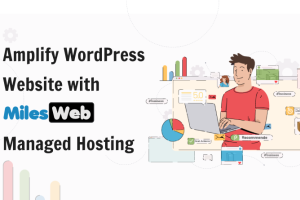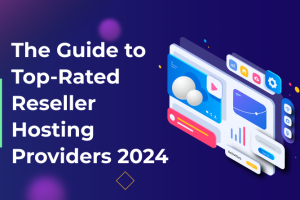Nowadays, achieving success means optimizing for conversions in a smartphone-centric world. With mobile devices becoming ubiquitous, businesses must adapt their strategies to cater to the relevant preferences and behaviors. Therefore, understanding how to harness the power of optimization is paramount to driving conversions and staying ahead of the competition.
Understanding mobile user behavior
To achieve optimizing conversions and even just effective digital marketing, you need to understand mobile user behavior. They have distinct patterns: they prefer quick, easily digestible content, often scrolling through social media and websites on the go.
Therefore, they expect websites to load swiftly, abandoning slow-loading pages. Moreover, they have shorter attention spans, so content should be concise and scannable. Furthermore, mobile search is highly localized and voice-driven, so optimizing for voice search and local SEO is paramount.
As such, gathering insights into their behavior through analytics is indispensable for refining your strategies. By grasping these nuances, you can effectively tailor your digital marketing efforts, ensuring your brand resonates with this new audience.
Mobile-friendly website design
It is impossible to attract a particular audience and get them to convert without making it easy for them to view your content and marketing. Therefore, website optimization for mobile devices is critical to ensuring a seamless conversion experience. Firstly, responsive design is key.
Your website must adapt effortlessly to various screen sizes and orientations. Furthermore, fast-loading pages are imperative, as people expect swift access to information. Next, streamlined navigation enhances satisfaction, making it easier for people to find what they need. Finally, you need fonts that are easy to read and to optimize images for quick loading.
Optimizing content for mobile
In a mobile-driven world, people want quick, easily digestible information. So, to optimize for conversions, you need to ensure your content is concise and scannable, with clear headings and bullet points.
Firstly, keep paragraphs short to aid readability. Additionally, optimize multimedia for faster loading, enhancing the overall experience. By aligning your content with audience expectations, you both improve engagement and enhance your website’s visibility, ultimately boosting your online presence and conversions.
Mobile SEO best practices
You need to master technical SEO if you want to really push your conversions further. Start by ensuring your website has a responsive design, as Google prioritizes such sites in search rankings.
Furthermore, mobile-specific keyword research should be conducted to target the right users effectively. Voice search optimization is another vital aspect, as people increasingly turn to voice commands on their devices.
Structured data can also help your content stand out in search results, boosting your click-through rates. Mobile SEO also requires optimizing for local searches, as users often seek nearby businesses on their phones.
By incorporating these SEO best practices, you can effectively enhance your online visibility and reach your growing audience.
Mobile app development and optimization
Mobile app development and optimization help engage the modern, smartphone-centric audience. Developing a user-friendly mobile app is just the first step since optimizing it is equally crucial. App store optimization (ASO) is a key component, ensuring your app ranks well in app stores and attracts downloads.
User experience within the app plays a significant role in retaining users and encouraging conversions, too. Smooth navigation, fast-loading screens, and intuitive design are essential. Regularly updating your app to fix bugs and introduce new features keeps users engaged.
Finally, gathering user feedback and using analytics helps identify areas for improvement. By continuously optimizing your app, you both enhance user satisfaction and increase your app’s visibility in app stores. This, in turn, boosts downloads and conversions, ultimately contributing to the success of your strategy.
Mobile checkout and payment optimization
Optimizing the mobile checkout and payment process is very much a necessity when optimizing for conversions. After all, people expect a seamless and efficient experience when making purchases on their devices. Simplifying the checkout process, reducing steps, and offering guest checkout options can significantly decrease cart abandonment rates.
Furthermore, secure and easy-to-use payment options are vital. In fact, multiple payment gateways and support is preferred. Additionally, optimizing the checkout page for every type of screen, ensuring form fields are easily tappable, and providing clear progress indicators can enhance satisfaction.
Finally, it’s also crucial to implement security measures to instill trust in online shoppers.
A/B testing and conversion rate optimization (CRO)
A/B testing and conversion rate optimization are indispensable tools for optimizing conversions. The former involves creating two versions (A and B) of a webpage, email, or ad, with slight variations to determine which performs better in conversions.
By systematically comparing the two versions, you can identify what resonates most with your audience and better optimize things. This iterative process leads to continuous improvement, ultimately increasing conversion rates and achieving your marketing goals.
Conversion rate optimization (CRO) is the broader strategy of enhancing the entire conversion process. CRO focuses on understanding client behavior, eliminating friction points, and tailoring the experience to encourage desired actions.
This naturally includes things such as making a purchase or filling out a form. Both A/B testing and CRO enable you to fine-tune your digital marketing strategies, ensuring that your efforts are effective.
User feedback and continuous improvement
User feedback and continuous improvement are necessary for a successful approach to new technology. Embracing new tech can be challenging, but feedback provides invaluable insights into what works and what doesn’t.
It allows you to refine your strategies, adapt to changing preferences, and fine-tune your technology implementation. Whether it’s a new app, website feature, or software, listening to actual experiences and suggestions is crucial.
By actively seeking and acting on their feedback, you can identify areas for enhancement easily. Continuous improvement ensures your tech offerings remain relevant and competitive in a fast-evolving digital landscape.
It’s a dynamic process that keeps you ahead of the curve and enables you to provide tech solutions that exceed customer expectations.
Securing your place in the digital marketplace
With our exploration of optimizing for conversions in a smartphone-centric world, it’s evident that there are plenty of challenges to overcome.
In order to thrive in this environment, businesses must prioritize mobile optimization, keeping the user experience at the forefront.
By embracing responsive design, good content, and effective marketing strategies, you can meet and exceed the expectations of the smartphone-savvy audience, ultimately driving higher conversions and securing your place in the digital marketplace!














